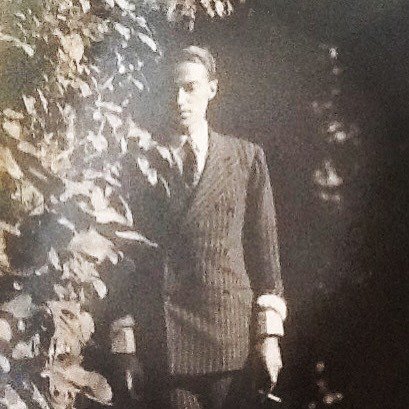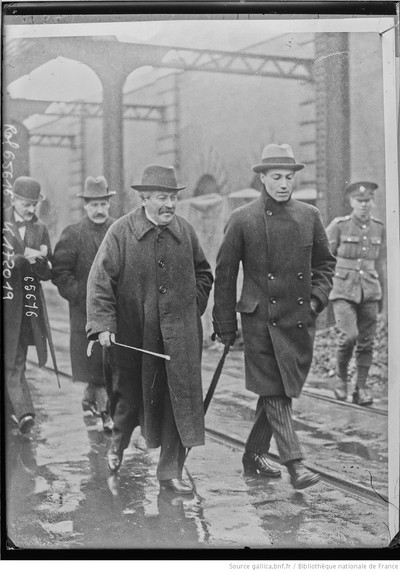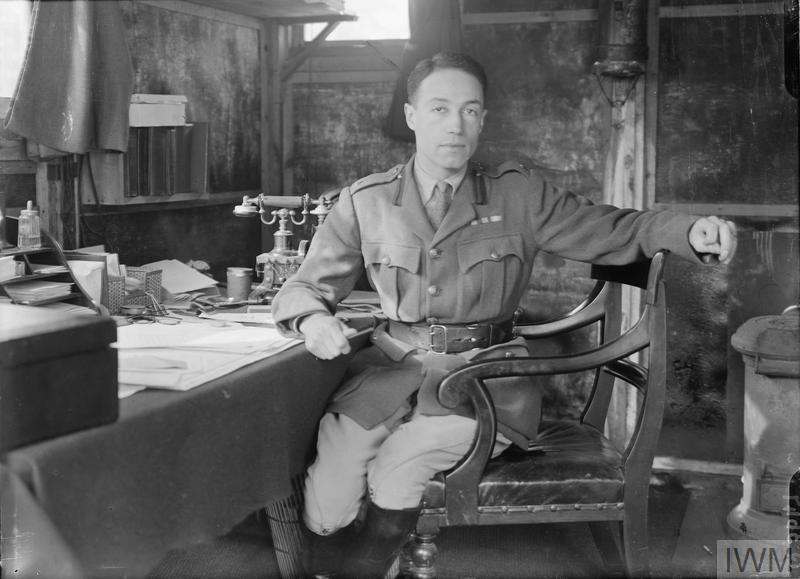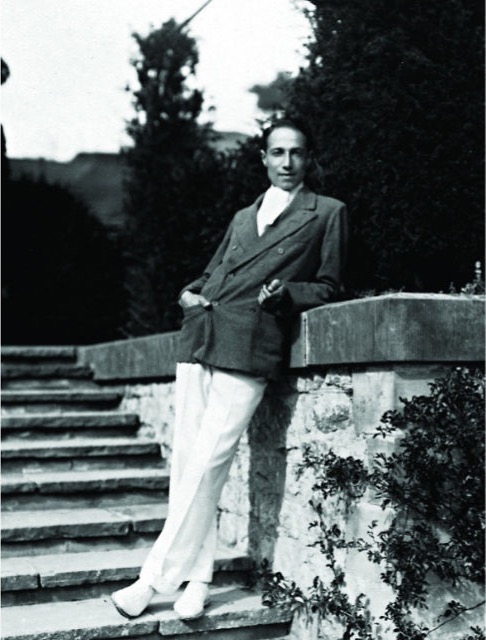Philip Sassoon - Muses & the Beau Monde
- Lilium

- Nov 18, 2020
- 6 min read

Sir Philip Albert Gustave David Sassoon, 3rd Baronet, GBE, CMG, born 4 December 1888, was a British politician, art collector, and social host, entertaining many celebrity guests at his homes, Port Lympne Mansion, Kent, and Trent Park, Hertfordshire, England.
Sassoon was a member of the prominent Jewish Sassoon and Rothschild families. He was born in his mother's mansion on Avenue de Marigny, Paris. His father was Sir Edward Albert Sassoon, 2nd Baronet, MP, his mother was Aline Caroline. His sister was Sybil Sassoon, who married the Marquess of Cholmondeley. He was a cousin of the war poet Siegfried Sassoon.
He was educated at Farnborough Prep school and Eton before going up to Oxford. Old Etonian Arthur Balfour recommended the Debating Society to him. Sassoon was taught aesthetics by Henry Luxmoore giving him an insight into philosophy and social realism. However he chose to read Modern History at Christ Church, Oxford. He was one of only 25 Jewish undergraduates, but was invited to join the Bullingdon Club. He joined the East Kent Yeomanry while still at Oxford and was commissioned as a second lieutenant.
Philip Sassoon entered Parliament in 1912. After the death of his relative David Gubbay, Sassoon became chairman of his family's company, David Sassoon & Co., although his participation in the management of it was only nominal. However, he continued to be a shareholder.
He was Member of Parliament (MP) for Hythe from 1912, succeeding his father, initially as the "Baby of the House". As an MP, he advocated aviation and bought his own aeroplane in 1919. In his role as undersecretary in the air ministry, he promoted civilian air travel.

He had a reputation for being one of the greatest hosts in Britain. Although he owned a house at Park Lane, Sassoon arranged for Herbert Baker to design another home for him in 1912, Port Lympne in Kent.
"It was a unique building, Italianate and Moorish in its influence, built for a voluptuary of the senses who wanted his rooms to be a rapturous medley of strong, exotic colours and filled with the luscious fragrance of flowers. The formal grounds at Port Lympne were like a Hollywood version of Tuscany."

Neither the eye-popping interiors nor the extravagant gardens at Port Lympne Mansion could be described as in any way "reserved", or even "English". In fact, one reviewer of a 2016 bio about Sassoon described it as a "sybaritic mansion". Mark Girouard has written of the "quiet good taste expected of a country gentleman" against which Philip may have chafed in his younger years, apparently torn between the standards of Country Life and Metro-Goldwyn-Mayer. His Ballets Russes-inspired dining room at Port Lympne with its lapis walls, opalescent ceiling, gilt-winged chairs with jade-green cushions, all surmounted by a frieze of scantily-clad Africans, suggests the outsider confidence of a Rothschild and of an openly gay man. One frequent guest was Lawrence of Arabia.
"Sassoon enjoyed witty gossip, but was never spiteful. He spoke with a clipped sibilant lisp, and liked to relax in a blue silk smoking jacket with slippers of zebra hide. He had fickle, moody fascinations with young men with whom he soon grew bored, but was loyally appreciative of female friends and kept an inner court of elderly, cultivated, ironical bachelors. His sexuality was central to his character and activities, but there is never any hint of sexual activity in the many memories of him. One hates to think that he was as sublimated as he sounds."
Sassoon served as private secretary to Field Marshal Sir Douglas Haig during the First World War from 1915 to 1918. Sassoon was present at the meeting on 1 December 1914 at the Chateau Demont at Merville in France, when King George V and Edward Prince of Wales met with Raymond Poincaré, President of France, and the Generals Joseph Joffre, Ferdinand Foch and Sir Henry Rawlinson. The allies showed their determination to fight Germany and the Central Powers. Because of his "numerous social and political connections", Sassoon, at that time a second lieutenant in the Royal East Kent Yeomanry, was in attendance.

Sassoon was appointed a Companion of the Order of St Michael and St George (CMG) in 1917. On 7 October 1919, it was announced that Sassoon had been awarded the French Croix de Guerre "for distinguished services rendered during the course of the campaign". In 1923 he was made Knight Grand Cross of the Order of the British Empire (GBE).
Below Sassoon inspects and presents awards to R.A.F. cadets at end of term. Cranwell, Lincolnshire 1925.
Sassoon also owned Trent Park and hired Philip Tilden to largely rebuild that mansion located in Cockfosters. Stylistic differences between the two houses illustrate changes in taste among members of British high society of the period. Trent Park possessed a landscape designed by Humphrey Repton but the existing house was Victorian and undistinguished. Sassoon had the Victorian additions demolished or altered, except for the west service wing, between 1926 and 1931. The projecting wings were added to the entrance (south) front. These modifications led to a large mansion in early Georgian-style. It became one of the houses of the age according to one report:
"A dream of another world – the white-coated footmen serving endless courses of rich but delicious food, the Duke of York coming in from golf... Winston Churchill arguing over the teacups with George Bernard Shaw, Lord Balfour dozing in an armchair, Rex Whistler absorbed in his painting... while Philip himself flitted from group to group, an alert, watchful, influential but unobtrusive stage director – all set against a background of mingled luxury, simplicity and informality, brilliantly contrived..."
This atmosphere, as Clive Aslet has suggested, represented a complete about-face from Sassoon's earlier extravagance at Port Lympne to what Aslet called "an appreciation of English reserve." In the words of Christopher Hussey, at Trent Sassoon caught:
"That indefinable and elusive quality, the spirit of a country house... an essence of cool, flowery, chintzy, elegant, unobtrusive rooms that rises in the mind when we are thinking of country houses."
Sassoon had a Camlet Moat romance and began on his return from Luxor, an excavation to dig up the ground a mile away from his house, in an open space called Camlet Moat, in hopes of finding a chest of gold and precious stones, which, according to tradition, no one is able to carry away because it is bound to the place by a spell of enchantment . What was reported to have been found was oak beams which formed the basis of a drawbridge, Roman shoes and daggers as well as mosaic tiles depicting a knight mounted on a white horse. The foundations of a large stone building were also found.


Sassoon was Parliamentary Private Secretary to David Lloyd George in 1920. Between 1924 and 1929 and again from 1931 until 1937 he served as Under-Secretary of State for Air, and gained much prominence in political circles.
As Secretary of State for Air, Sassoon was Honorary Air Commodore of No. 601 (County of London) Squadron. The squadron was nicknamed "The Millionaires’ Squadron" because it was reported to have six millionaire members. As Under-secretary of State for Air, Sassoon carried out the first general inspection of British overseas air stations, flying the Blackburn Iris. Afterwards he wrote The Third Route, published by Heinemann in 1929, recounting the story of the development of the air route from England to India.
In 1932 he was enthusiastic about the new Percival Petrel monoplane and ordered his own model powered by a Napier Javelin 111 six cylinder engine, with the interior finished in red leather. In this luxurious Gull G-ACGR he competed in the King’s Cup and the Folkestone Aero Trophy Race.

He was Chairman of the Trustees of the National Gallery from 1933–1935, and as Minister for Works in the 1930s he was responsible for embellishing many of London's monuments and parks. As a collector Philip Sassoon was, like many of the Rothschilds, drawn mainly to the English and French 18th century, but he also collected contemporary artists such as John Singer Sargent and William Orpen.
Sassoon died on 3 June 1939, aged 50, of complications from influenza. He left an estate valued at £1,980,892 on which death duty of close on £800,000 was paid. Hannah Gubbay, the widow of David Gubbay, was the main beneficiary, inheriting Port Lympne, Trent Park and an annuity of £11,000.
"His restlessness and fatalism, which were notorious among his friends, killed him at the age of 50 in 1939: although his physicians ordered bed rest after a viral infection, he hurtled about in unnecessary gaieties until his body was beyond recovery."
After Sassoon's death, he was described by his friend Noel Coward as "a phenomenon that would never recur". According to biographer Damien Collins "I think because he died just three months before the Second World War started, he became part of that lost golden era; war had closed a chapter on that".
Sassoon was said to have lived an openly homosexual life. According to a reviewer of a 2016 biography of Sassoon, "his personal life was something that he shut away from the world". There was only a single intimate letter among his personal papers, to "Jack", a travel companion. The reviewer adds, "despite his many gay and bisexual friends, away from 'bohemian circles' it was still a taboo subject (homosexual acts were illegal). Sassoon was consequently regarded as an enigmatic solitary figure". Another reviewer offered that, "His sexuality was central to his character and activities, but there is never any hint of sexual activity in the many memories of him".
Reading Recommendations & Content Considerations
Damian Collins Peter Stansky





























































































































































Comments